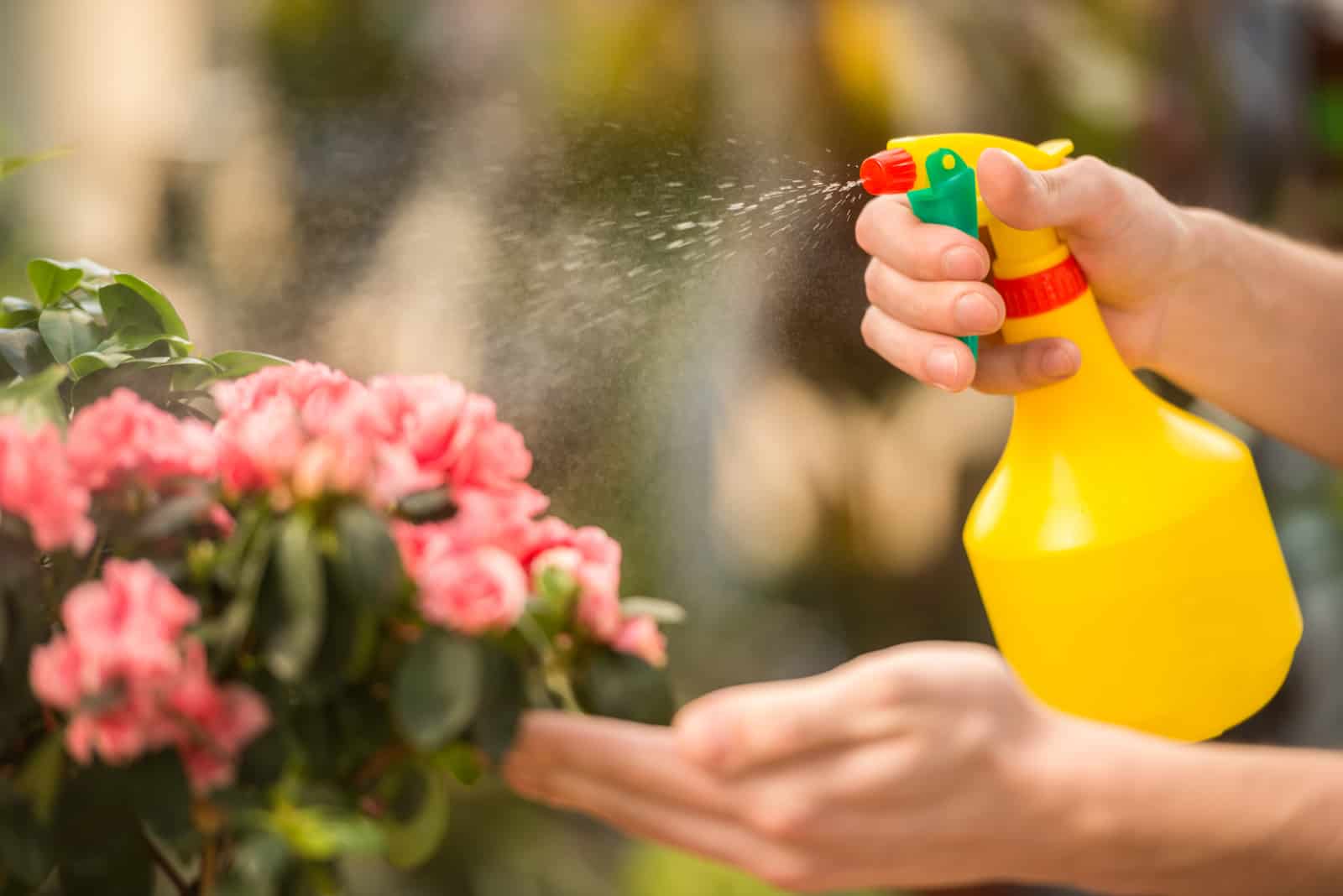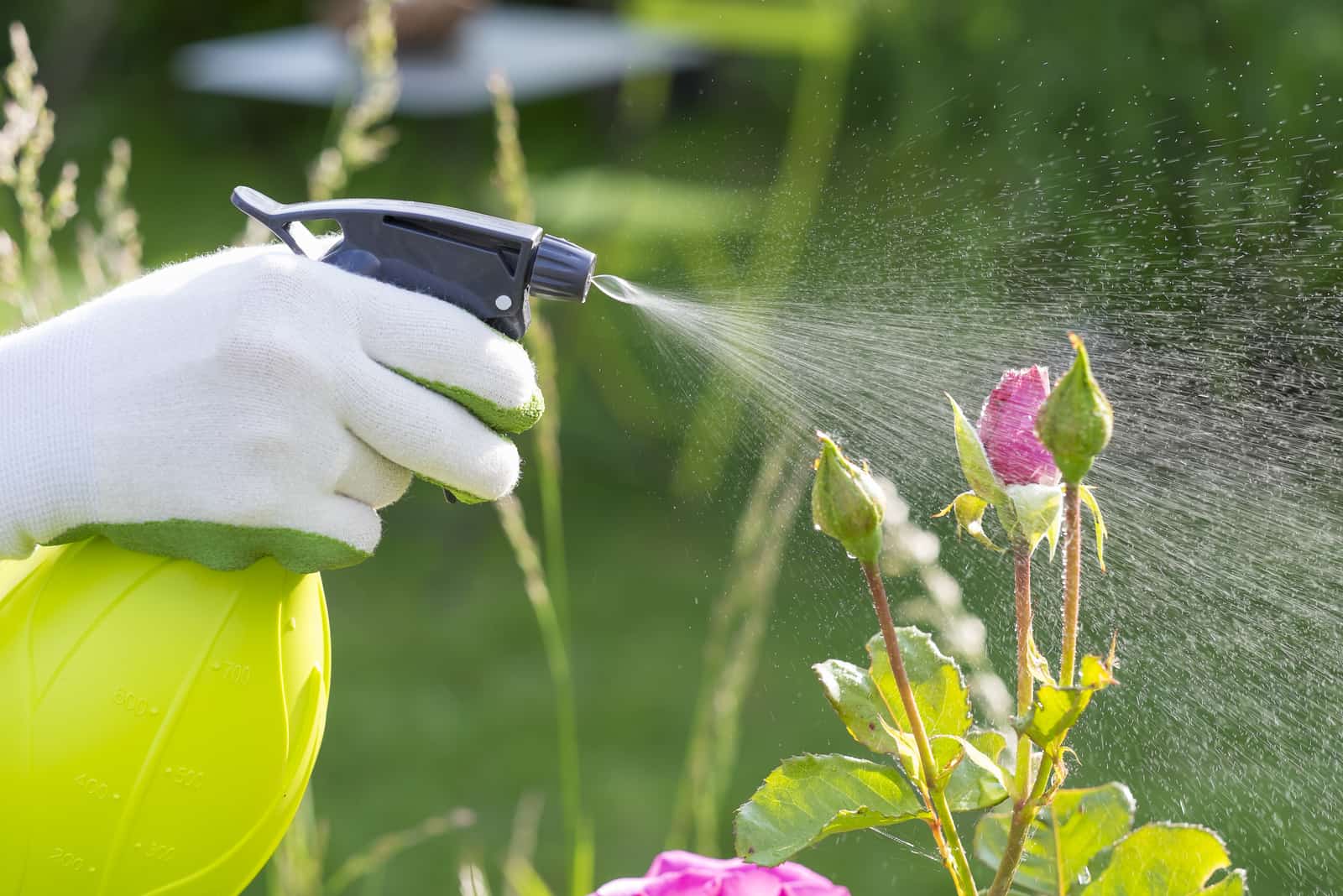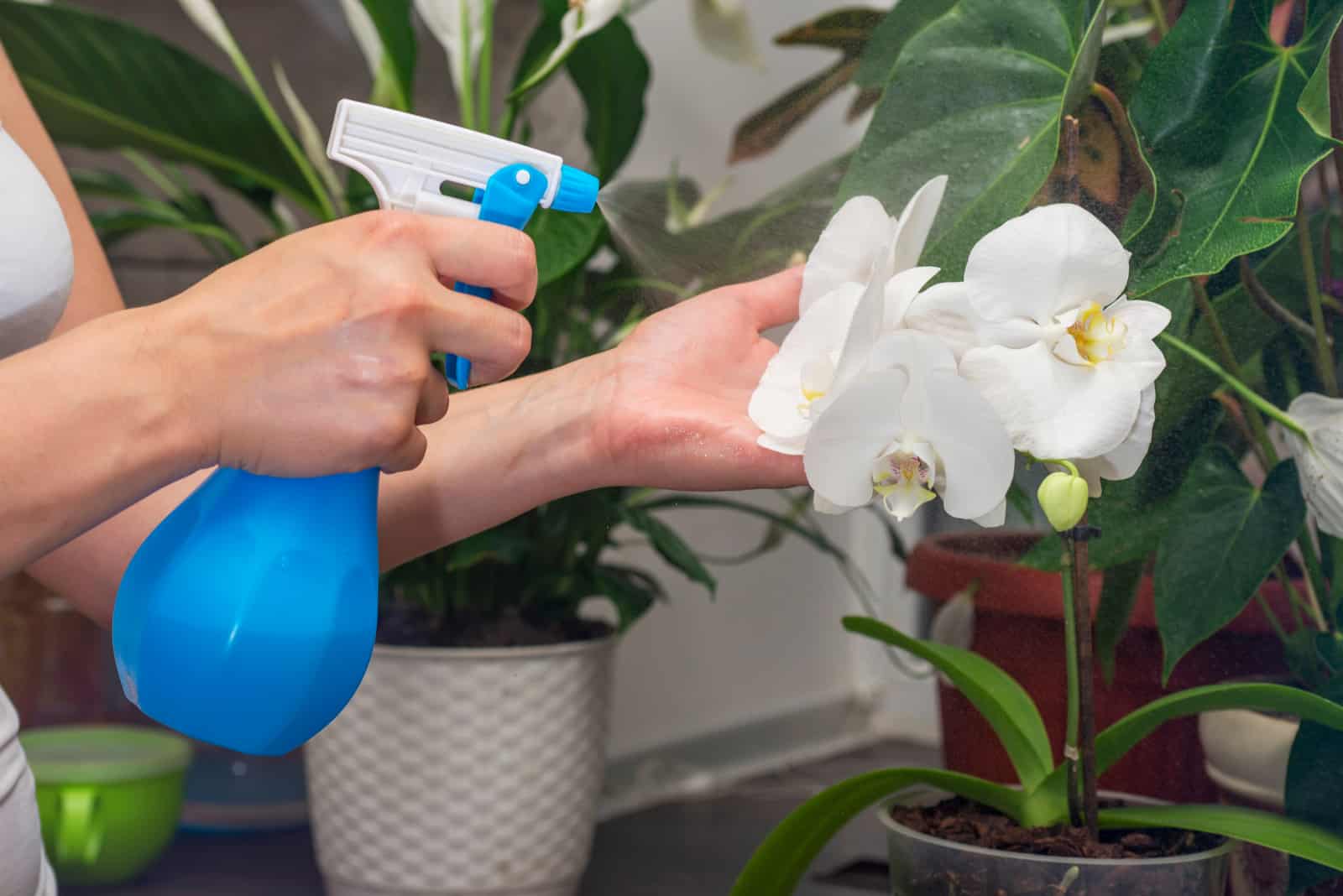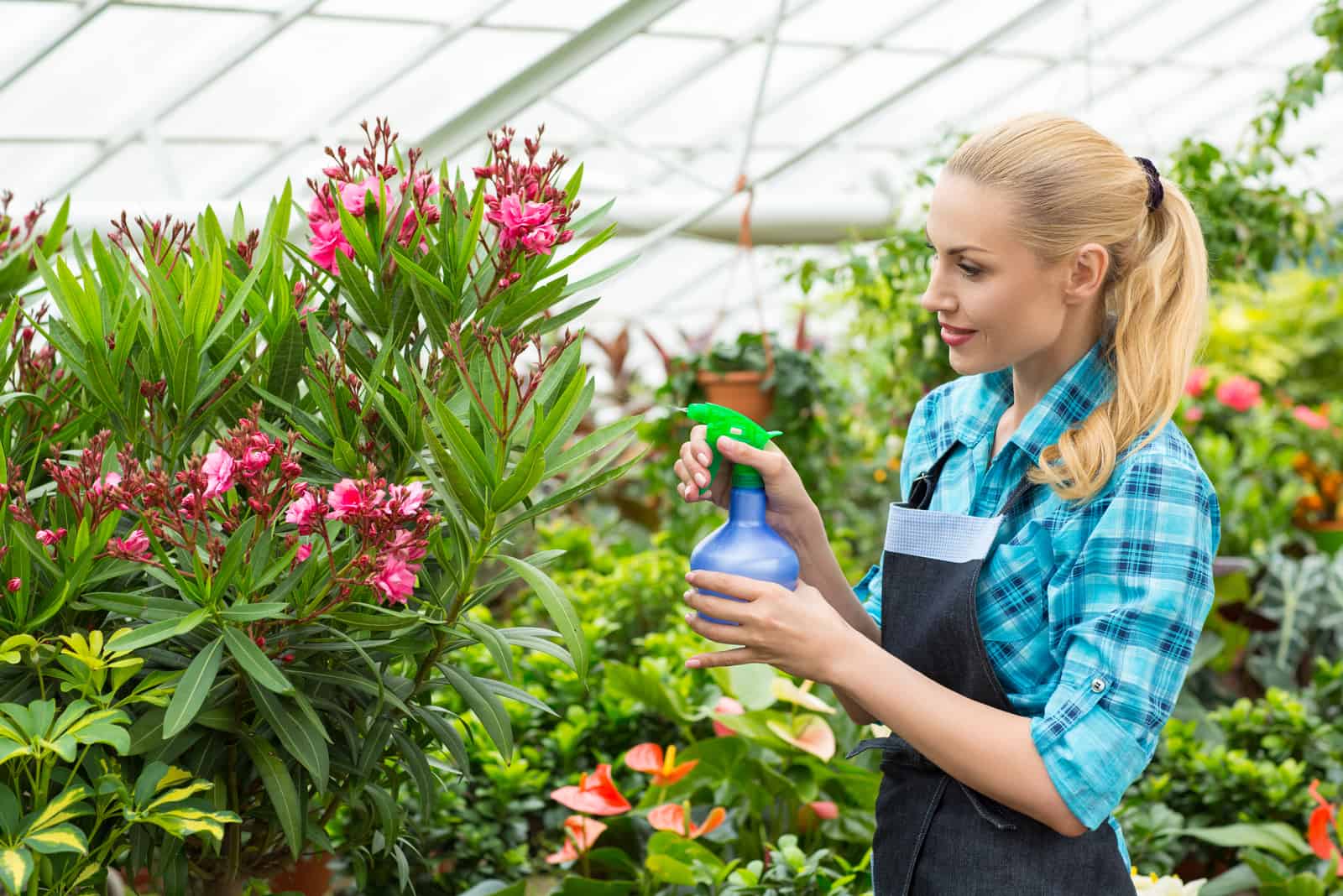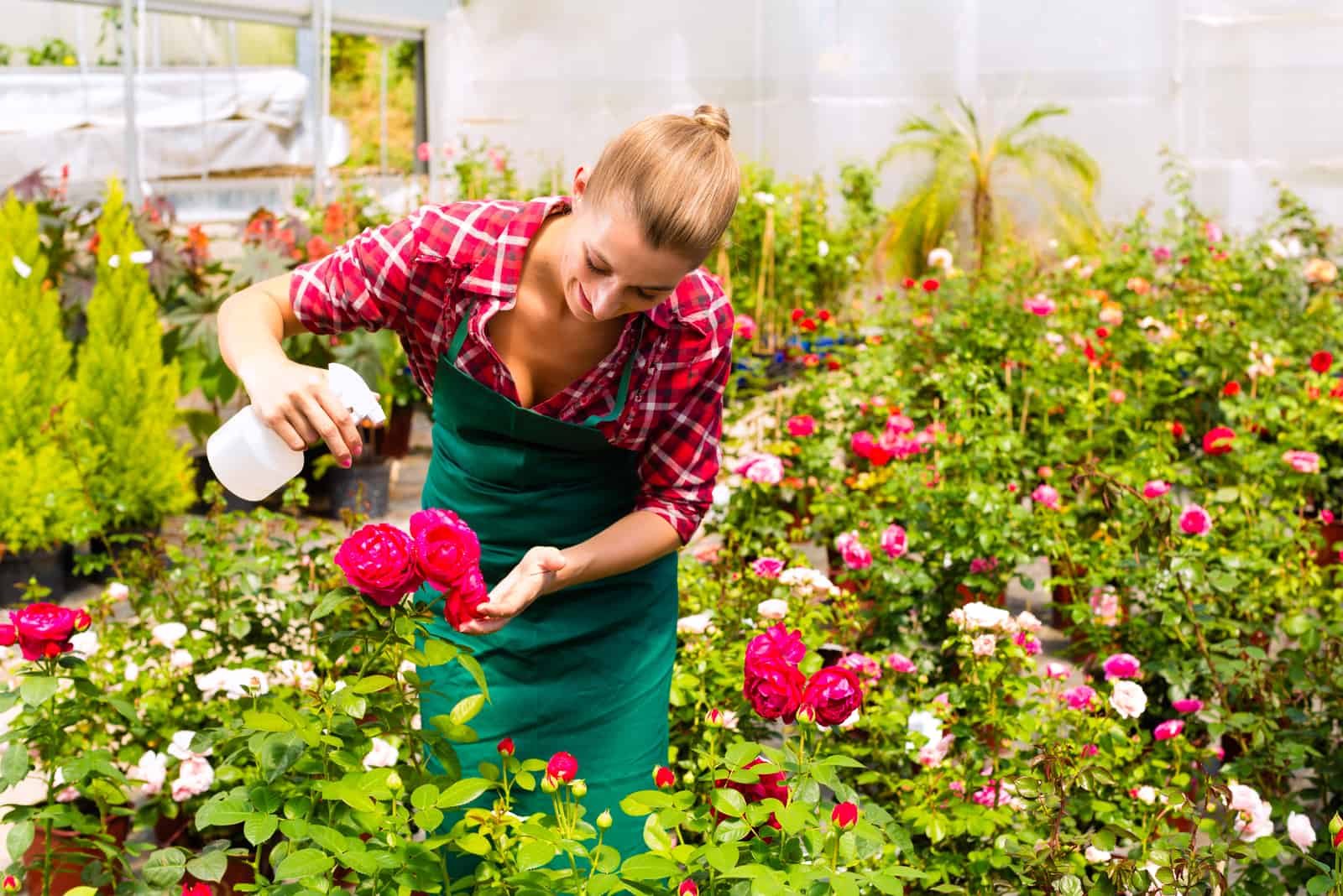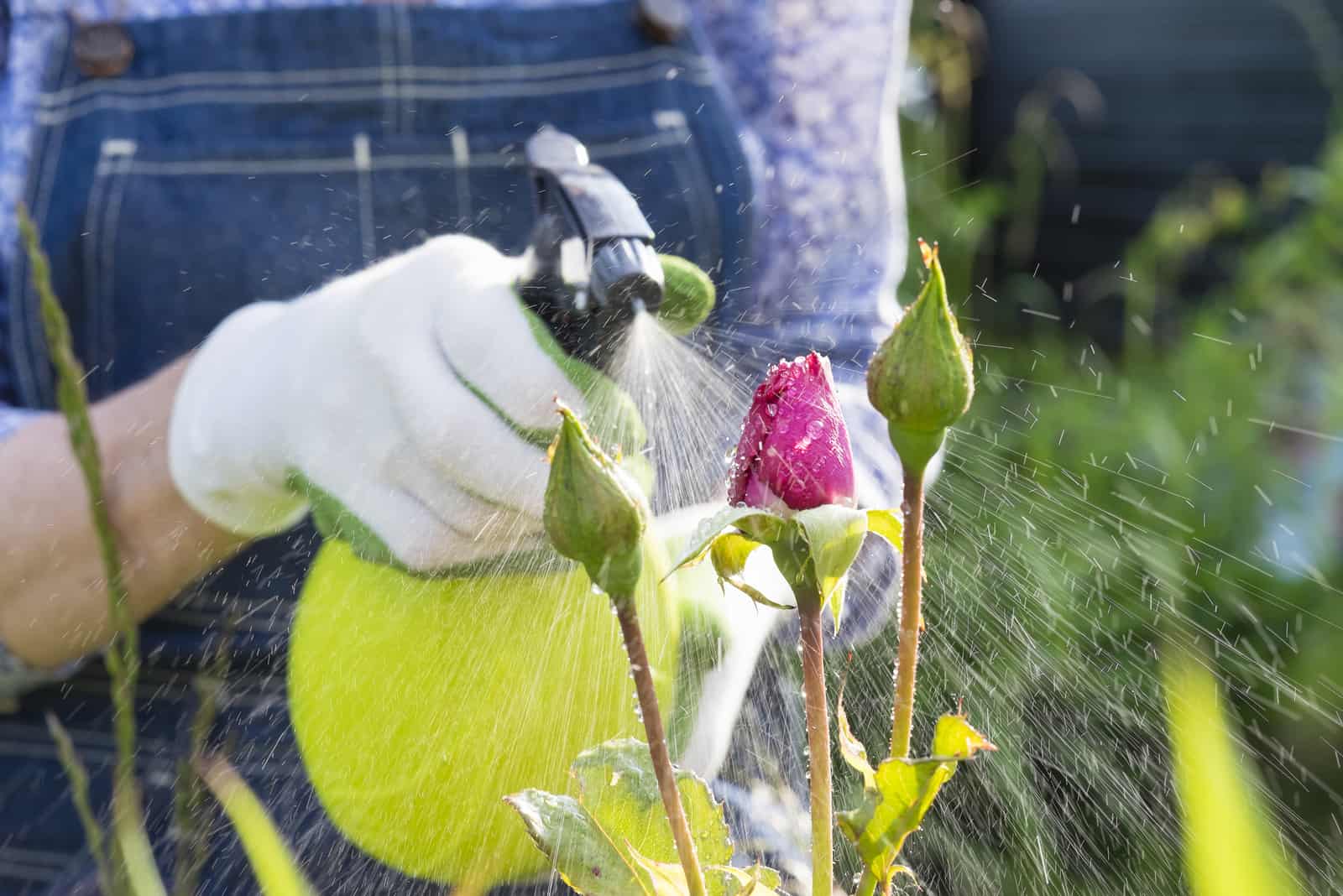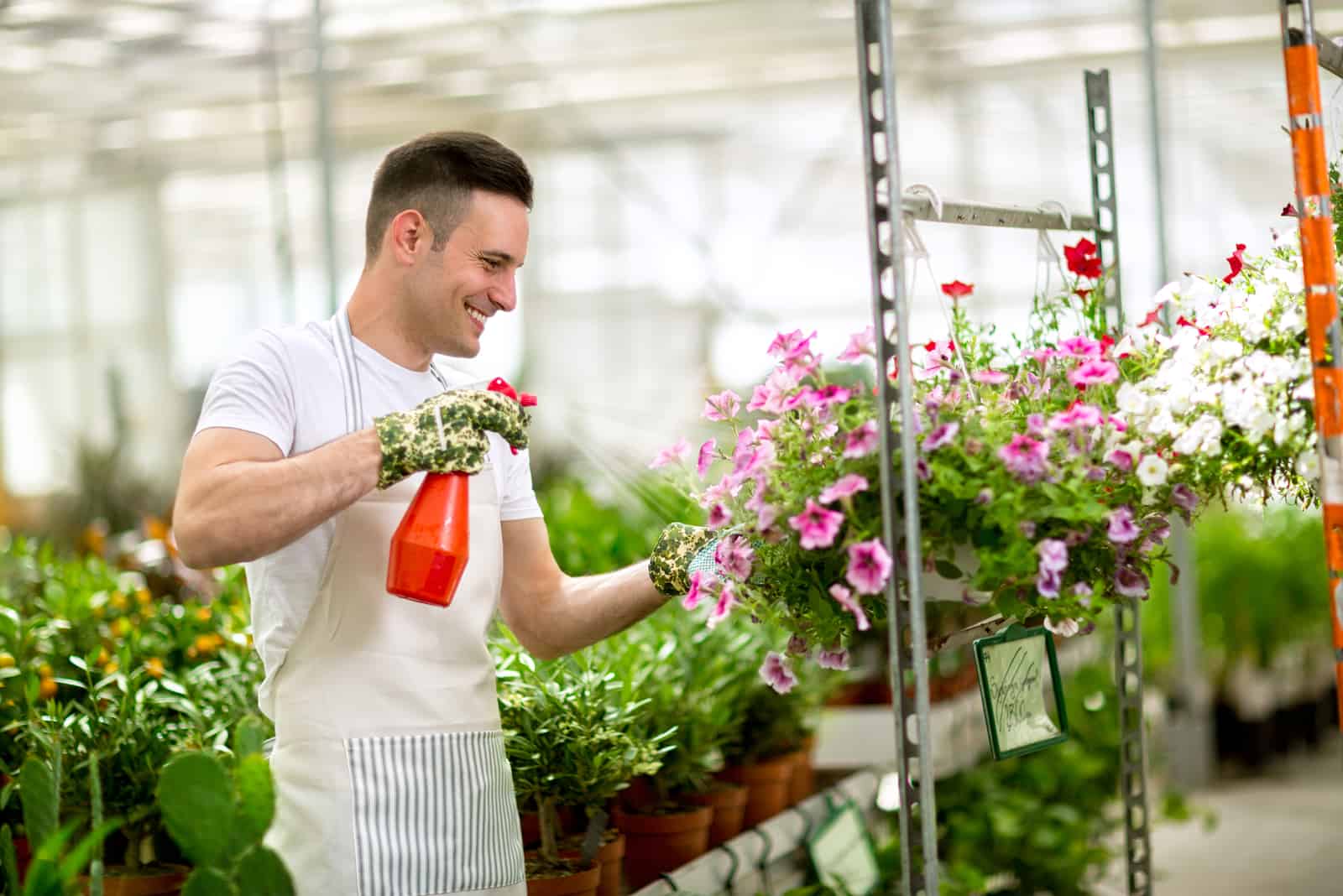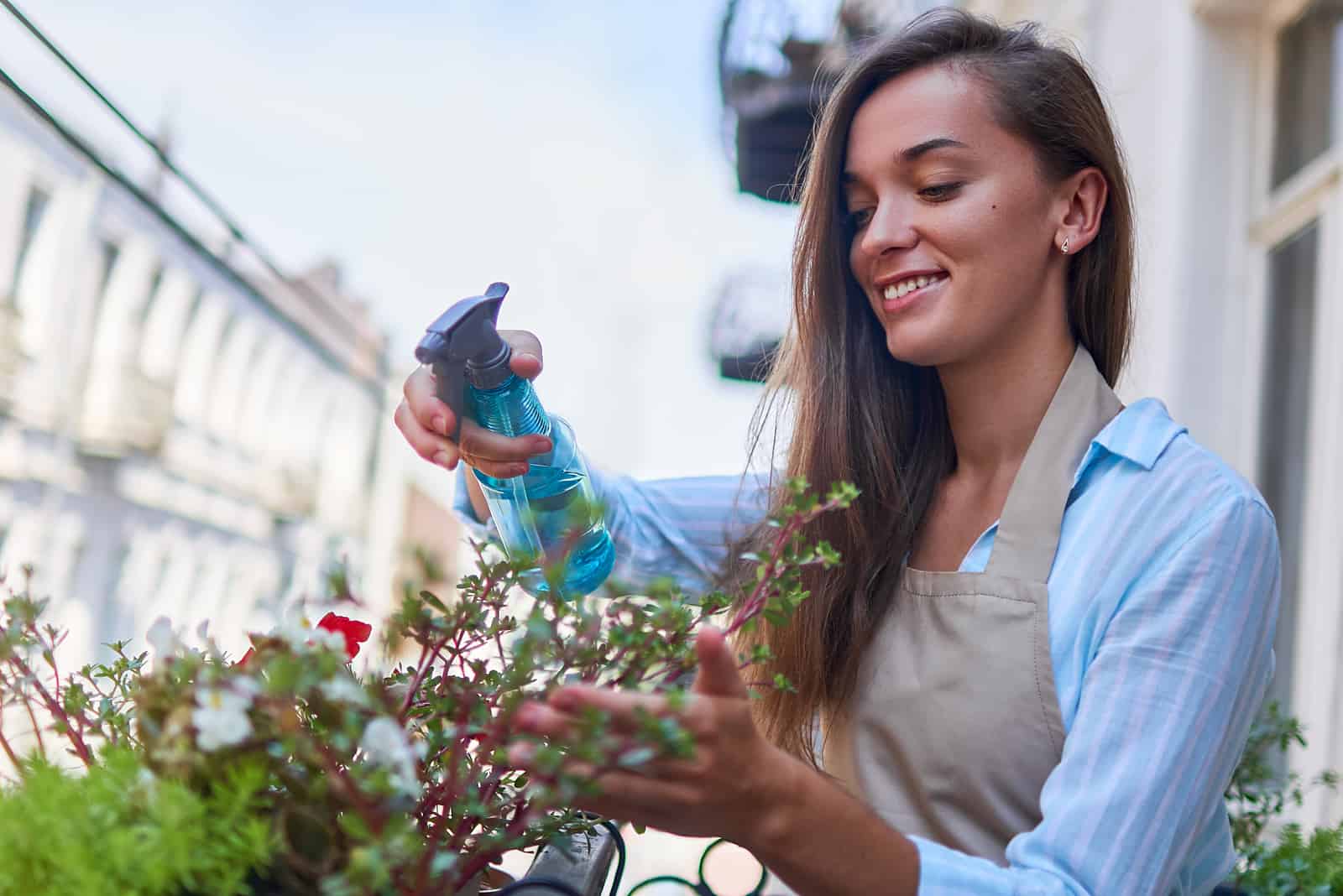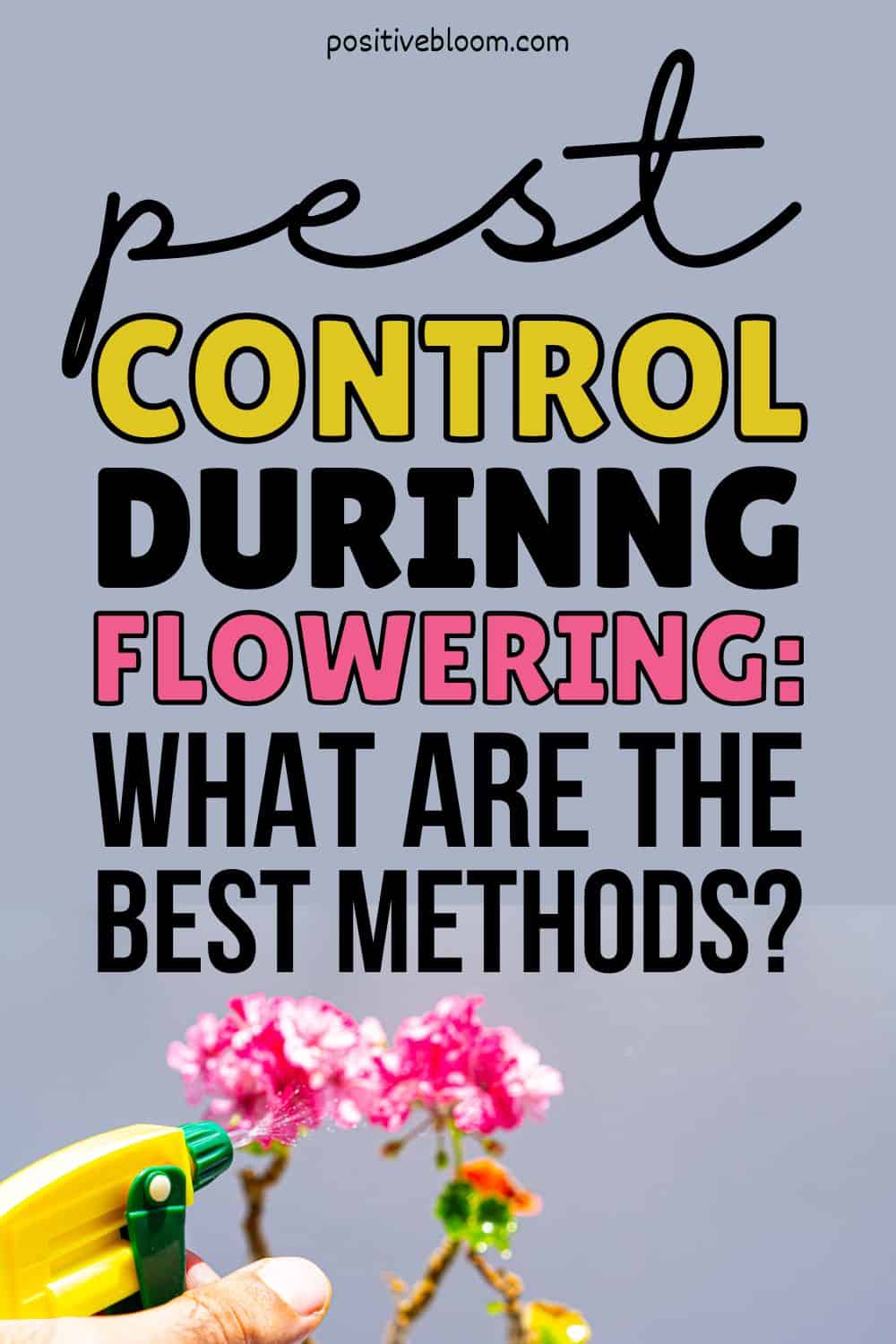Many people have nightmares after watching horror movies, but I have them about finding pests on my plants!
If left untreated, a pest infestation can prove fatal for plants, so it’s essential to know how to get rid of them.
Prevention is the best remedy, so taking care of your plants and consistently monitoring them is the best way to avoid pests and keep them healthy.
Luckily, a few pests don’t mean there’s an infestation, so the problem can be solved quickly.
Therefore, it’s crucial to know about pest control during flowering if you want your plants to grow healthy and thrive.
I have included some excellent methods that even beginner growers can use in this article.
Keep reading to find out everything you need to know!
Pest Control During Flowering: All-Natural Pesticides
Although chemical pesticides have a high success rate and can help you get rid of pests faster, you should choose natural methods instead. There are many reasons for this, and the biggest is if your plant produces crops that you eat.
Pesticides are often harmful to nature, so using natural methods should always be the first choice.
Pests like spider mites, aphids, thrips, mealybugs, caterpillars, cabbage loopers, or leaf miners are the most common pests that affect these precious plants.
Other pests may also infest your plants, but not as often as those listed above. Fungal diseases and powdery mildew can also affect plants during the flowering stage.
Let’s find out more!
Remove Or Spray Off The Pests
You may call me Captain Obvious, but the first thing you can do about pests is remove them yourself or spray them off.
All growers should do this first before deciding on a specific, and probably more efficient method.
This method works great with heavily infested plants because you remove any pests before applying a pesticide.
For instance, if you grow your Lomandra breeze in a pot (or any other potted plant), take it outside and spray off as many pests as you can. It would be best if you remove the affected leaves and buds as well.
Carefully inspect the undersides of the leaves as many pests hide or lay their eggs there.
On the other hand, if the plant’s soil is moldy and smells unpleasant, it may be infested with fungus gnats. In this case, you need to remove all the affected parts with sterilized tools.
Be extra careful and try not to touch the healthy parts of the plant to prevent the infection from spreading.
The good news is that any method you use after this will be more efficient.
Neem Oil As Natural Insecticide
Most growers use neem oil as a preventative method, but also as a way of getting rid of pests. Most surprisingly, fungus gnats. This oil contains azadirachtin, which disrupts their growth and makes them incapable of eating plant tissue.
Here are the benefits of neem oil:
• Completely safe
• Organic
• High success rate
• Safe for ladybugs, bees, and wasps
If you are not a fan of the strong smell of essential oils like neem oil, mixing it with water will make it less powerful.
You can use neem oil on the day before harvest if you need to. This type of essential oil acts as a fungicide as well.
However, you should avoid applying it to the buds as it can affect the taste and smell of the crops. Neem oil takes some time to dissipate, and applying it before harvest will prevent it from doing so.
All you need is the neem oil, some water, and a spray bottle. Mix the two together and pour them into the spray bottle, and then spray off the pests.
I have to mention a few things related to cannabis growers.
This method works great for cannabis plants, but a few things need to be considered. The first is an allergic reaction to this pesticide. If you’re growing cannabis for someone else, bear in mind that the person who will eventually use the cannabis may have an allergic reaction.
The second thing to pay attention to is if you are growing cannabis for medical patients, as you never know how they might react.
This pesticide is effective against spider mites, aphids, mealybugs, thrips, scales, cabbage looper, leaf miners, barnacles, and fungus gnats.
Horticultural Oils
Plants have developed their own natural defense mechanisms to fight bugs and pests which prevent them from feeding on the leaves and taking nutrients from the plants. Horticultural oils use their powers to promote plants’ mechanisms to deal with pests. In other words, the plants refine the oils and use them to fight pests (quite efficiently in most cases).
Another advantage of horticultural oils is that they don’t leave a film on plants. However, this also means that the effects of the horticultural oils won’t last very long.
They will work for about eight hours, so you’ll have to apply them daily or combine them with other pest repellents.
I suggest using peppermint oil every day as it can be used as a foliar spray on flowering plants and won’t damage them.
Lavender, orange, tea tree, or eucalyptus oil are also excellent choices.
If you want to get rid of aphids, spider mites, mealybugs, whiteflies, caterpillars, crickets, or fungus gnats, horticultural oils are a perfect choice.
Garlic Spray
Garlic is a powerful insecticide with natural antibacterial, antiviral, and antifungal effects. Mix 5 peeled and crushed garlic bulbs with 16 oz water.
Leave the garlic in water overnight to infuse, add a dash of dish soap, and strain the mixture through a fine sieve.
Place this liquid in a spray bottle after diluting it in a gallon of water. To keep pests away, you can spray this mixture on your plants once or twice a week.
Tobacco Spray
Cigarettes are known for their harmful health effects, but nicotine in tobacco is also deadly to various insects.
You will need 1/4 cup of tobacco leaves, so make sure to collect enough cigarette butts.
Place the tobacco leaves in a sock and soak them overnight in a quart of water.
Avoid applying this DIY insect spray on plants in the nightshade family like datura, petunias, or nicotiana flowers, as tobacco may carry the mosaic virus that often affects these plants.
Oil Spray
Two basic substances can be used to make an excellent insecticidal spray: soap and oil.
Oil spray kills soft-bodied insects like aphids and spider mites by suffocating them.
Mix 1 cup of vegetable oil with 1/4 cup of liquid soap and shake it well.
This concentrate can be kept in the refrigerator until needed. Mix 1 tablespoon of this concentrated liquid with 4 cups of water for treating plants.
You can apply the mixture once a week, and trust me, you’ll get excellent results.
Hot Pepper Repellent
Even if you don’t like spicy cuisine, adding a row of hot chili pepper plants to your garden for pest-repelling purposes is definitely worthwhile!
Place a handful of dried spicy peppers and seeds in a food processor and grind them to a fine powder. Avoid getting the dust on your skin or in your eyes.
Sprinkle the hot pepper powder around your garden plants to deter ants and whiteflies. You can also add 1/2 cup of ground chili peppers to a quart of fine horticultural oil and spray the surfaces and undersides of flower leaves for extra sticking power.
Citrus Spray
Aphids and other soft-bodied insects can be killed with a simple citrus spray.
One orange or lemon rind should be grated and added to a pint of boiling water. Leave the mixture overnight and strain it in a fine sieve.
Fill a spray bottle with the citrus and water mix and spray the tops and bottoms of the affected plant leaves.
The mixture has the highest success rate if it comes into contact with the pests.
Insecticidal Soaps
How do insecticidal soaps work? They contain fatty acid salts that weaken the pests’ outer shell. Don’t worry, they are entirely safe for humans and won’t leave any trace.
Pay attention to coverage and apply insecticidal soaps often. Still, I suggest you avoid spraying buds as it may affect the crops’ taste or smell.
The great thing about insecticidal soaps is that they are effective against many pests, like mealybugs, grasshoppers, aphids, whiteflies, etc.
These soaps also have a high success rate when used to repel and destroy fungus gnats and white powdery mildew.
Bacillus Thuringiensis (BT) bacteria
Another way to control pests during flowering is by using caterpillar BT spray that contains bacillus thuringiensis (BT). This is a great method if you are a cannabis grower.
In my opinion, BT is a must have spray in cannabis growing as caterpillars are cannabis’s worst enemy.
This bacteria kills larvae and destroys the caterpillars’ ability to eat.
Be very careful when purchasing BT products, as some may be effective for mosquitoes but not for caterpillars. Pay attention to the label and make sure the product is designed for caterpillars.
Unfortunately, this bacteria won’t destroy and repel many other pests, but it is the most efficient way to get rid of caterpillars.
As soon as you spot any caterpillars or their larvae, apply BT spray and continue applying it weekly until you see signs of improvement. In other words, stop using BT sprays when you stop seeing caterpillars.
In cases of heavy infestation, feel free to apply this spray more often.
You should spray the bottom and the leaf surfaces.
Apply BT after watering because water washes off the spray if you grow your plants indoors. If you grow plants outside, spray them after heavy rain.
BT sprays are completely safe for humans, which means they can be used at all flowering stages of the plant.
Don’t worry if there are still caterpillars left alive after you apply BT, because they are actually starving to death. I know it sounds cruel, but it really works, and if I had to choose between a dead caterpillar and a dead plant, I would choose the former!
Diatomaceous Earth
Diatomaceous Earth is fossil dust, and it can be sprinkled on the soil and anywhere in your home. For example, you can sprinkle Diatomaceous Earth on the windowsills and doorways to repel pests. In other words, use this repellent on the boundaries of your growing area.
Diatomaceous Earth is entirely safe for humans, pets, and plants, so there’s no need to worry.
If you’re wondering how this can be safe for humans and pets, you should know that the particles are actually sharp when observed under a microscope.
When pests touch Diatomaceous Earth, it dehydrates and tears them.
Remember that this method won’t be effective on heavily infested plants, so you should consider combining it with another method.
However, this is an excellent preventive measure and may slow down and control pests during your plants’ flowering stages.
Alcohol And Water
Alcohol and water mix is another method to deter pests and remove as many as possible. Fill a sprayer with 1/3 rubbing alcohol and 2/3 water and spray your plants with it once a week.
The thing with this method is that you are aiming to kill pests immediately after spraying them. Remember that alcohol evaporates and won’t stay on the plant, so it won’t be effective later, like oils and soaps.
You’ll need to combine this method with others because you can’t use it all the time and it may not kill every pest in one application.
This method works best with aphids and spider mites.
If you are dealing with spider eggs in the soil of your plants, this is one of the best methods you can use.
Beneficial Insects
Although the word “beneficial” may not seem like a good one to combine with “insects”, it actually can be!
These insects aren’t natural enemies and they can be ordered online, so you should try getting some and welcoming them to your home.
Beneficial insects eat bugs and pests, but may not work on heavily infested plants.
Ladybugs
Ladybugs and soft-bodied insects like aphids, mealybugs, spider mites, and whiteflies don’t get on well. Ladybugs are predators of the larvae forms of all pests.
It’s pretty easy to ‘apply’ this method; just release the ladybugs on to the plant and watch the pests disappear.
Of course, this method is suitable for outdoor or greenhouse plants.
When purchasing ladybugs, make sure they are a native American species as the Asian ones are invasive.
Ladybugs may fly off, so it’s important to keep them around.
Here’s what you can do:
• Place your ladybugs in the refrigerator when they arrive, and keep them in there until the evening. This will slow down the ladybugs’ metabolism and activity. Don’t worry, it’s completely safe.
• After the sun goes down, release your ladybugs.
• First, water the plants you intend to release the ladybugs on.
• Release these extremely beneficial insects near food sources (mealybugs, aphids, etc.).
Neem oil and ladybugs are a great combination to fight cannabis pests. Neem oil deters pests, but it’s so mild that the ladybugs stay.
Lacewings
Like ladybugs, lacewings are also effective in fighting aphids, mealybugs, spider mites, etc.
Green lacewings are fragile, which is why they are sold as eggs. Purchasing them as eggs also prevents them from flying off (we have seen many insects do just that).
Place the lacewing eggs on the affected plants and see how great they are. Once you use lacewings, they will be your must have pest repellent.
Pyrethrins
Pyrethrins are a natural chrysanthemum derivative. Because of their minimal toxicity to humans and animals, this organic pesticide has been utilized in horticulture for many years.
Pyrethrins are highly toxic to insects and can be used to control a wide range of pests. Because the concentration of pyrethrins varies widely from product to product, it’s essential to follow the manufacturer’s instructions.
Spinosad
Spinosad is an organic component derived from Saccharopolyspora Spinosa bacteria. This bacterium disrupts the neurological system of pest insects.
Spinosad is most effective when applied to pest insect larvae.
I suggest you use spinosad only for an indoor grow.
Traps
This method won’t work with tiny pests that are barely visible to the naked eye.
You can use sticky, yellow cards to trap fungus gnats.
You can use stale beer or wine, sugar water, or water mixed with yeast for snails and slugs. Put the mixture in a shallow container.
Integrated Pest Management (IPM)
IPM is a strategy for dealing with pests or controlling them.
IPM establishes an action threshold, a point where pest numbers or environmental factors signal that pest treatment is required. Spotting a single pest does not always indicate a pest infestation.
Many organisms are harmless, and you have seen in this article that some are even beneficial.
IPM programs attempt to detect pests and precisely identify them to make appropriate control decisions based on action thresholds. Identification and monitoring are key to pest control as you shouldn’t use pesticides if they are not required.
IPM operates as the first line of defense against pests by managing the crop, lawn, or interior area to keep pests from becoming a problem.
Using cultural techniques such as crop rotation, pest-resistant cultivars, and pest-free rootstock planting can be helpful. These control techniques can be highly effective and affordable, with little to no risk to humans or the environment.
As a part of this strategy, it’s advisable to grow mint, marigold, and peppers as these plants attract beneficial insects.
It would be best to inspect your plants regularly, and don’t skip the undersides of the leaves!
Fertilize your plants and make sure they are healthy so they can fight off pests easier. Also, make sure your grow room is always clean.
Wrapping Up
Although pest control during flowering may seem like a task that has to involve chemical products, that’s not always the case.
Many other methods can control and solve pest problems.
If you are into DIY, you can use garlic, hot peppers, vegetable oil, or citrus spray. Neem oil successfully fights pests and should be used as a prevention measure.
Luckily, many organic pest repellents are available online, so you won’t have much trouble getting some.
My advice is to keep your plants healthy, inspect them regularly, and use all the preventive measures to avoid pest infestation.
Until next time!
Like this post? Share or pin it for later!

